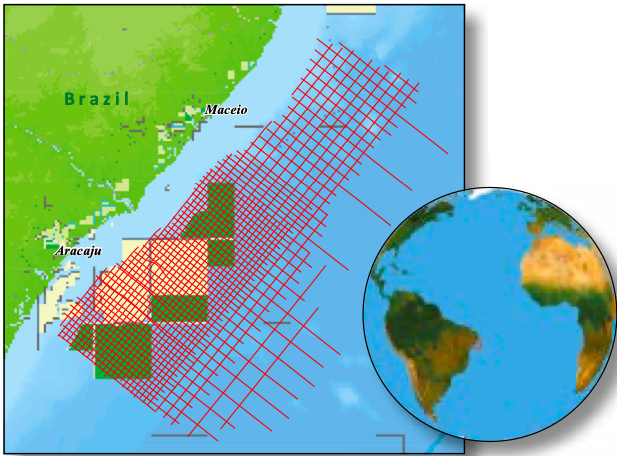
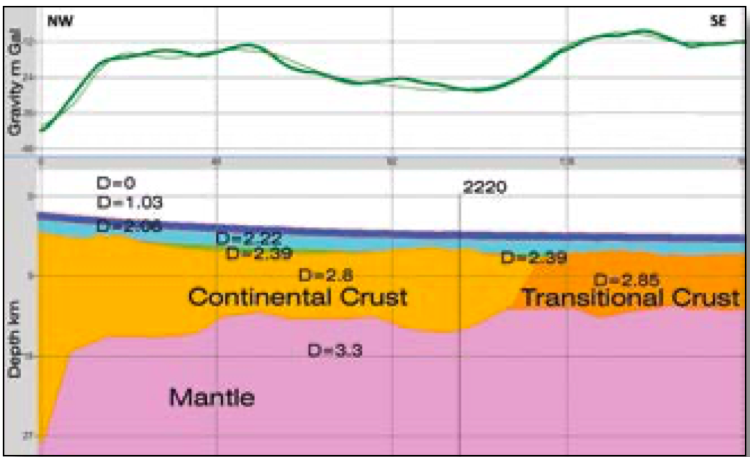
Sergipe Basin Potential Revealed
Integration of key data has resulted in a better understanding of the petroleum system, allowing for the identification of multiple untested play types.
The Sergipe Basin is located offshore north-east Brazil. It is divided into two sub-basins, Sergipe in the south and Alagoas in the north. With an offshore area of 35,000 km2 and water depths up to 3,500m, it is classified as a passive margin/pull-apart basin with initial Early to Mid-Cretaceous rift basin development, followed by a passive margin drift phase from the Mid-Cretaceous to present, resulting from the separation of South America from Africa. The Alagoas Basin is dominated by a thick syn-rift succession and an abbreviated post-rift/drift sedimentary section. The Sergipe Basin is characterised by a major extensional rift phase and the presence of a fully developed post-rift sequence.
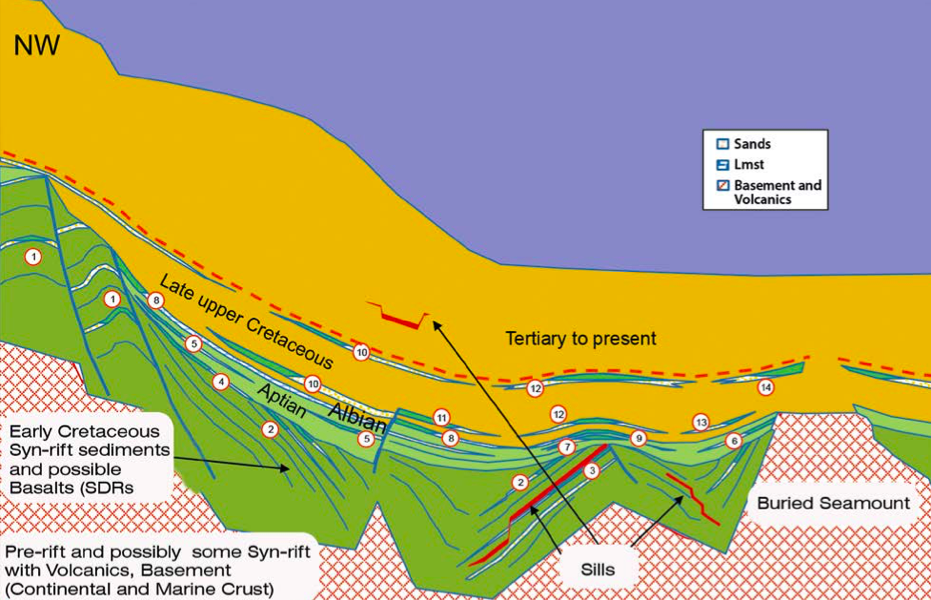
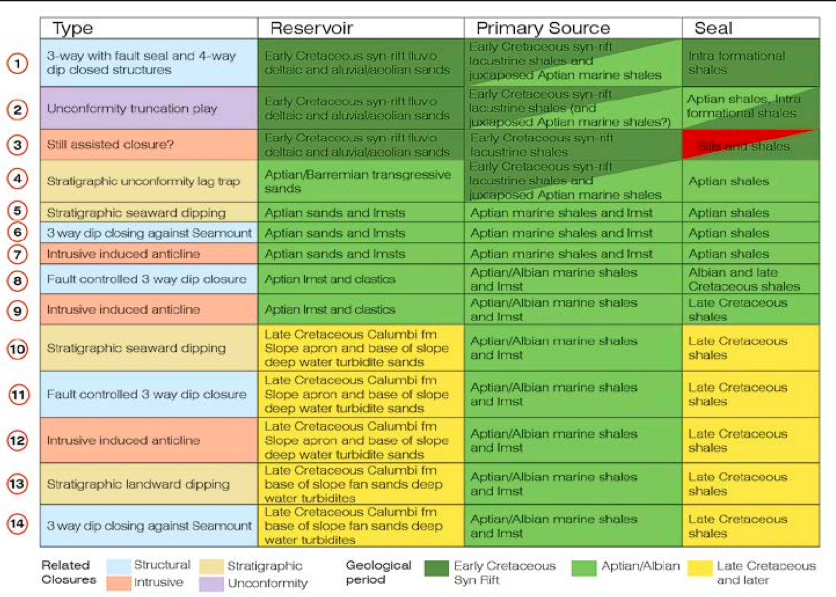
The onshore basin is mature, having experienced exploration activity for almost 100 years, although prior to the 1950s it was sporadic. In the ’60s there was heightened drilling activity and the largest onshore field, Carmopolis, was discovered at this time. Offshore, significant seismic and drilling commenced in the 1970s and the 110 MMboe Caioba field was discovered. Exploration on the shelf continued through the ’80s to late 2000s with moderate to small discoveries. In 2010 Petrobras made several significant Upper Cretaceous to Lower Tertiary, turbidite channel system discoveries in the deeper water of the Sergipe Basin. The company submitted eight appraisal evaluation plans to the ANP (National Agency of Petroleum) and drilling on the recent discoveries is continuing in order to commercially confirm some 3+ Bboe of reserves.
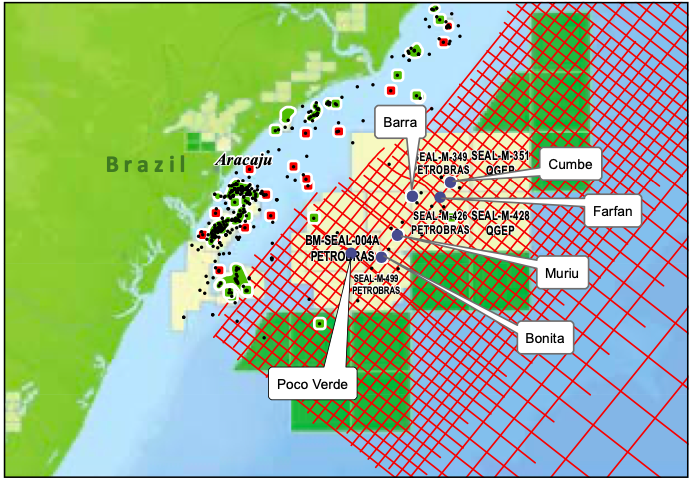
Undrilled discovery analogues
The Barra discovery well was drilled in September 2010, reaching a depth of 6,510m in 2,341m of water. Permeability and porosity conditions in the reservoir are excellent at well depths of approximately 4,650–4,750m, where drill stem tests indicate gas and condensate present in commercial quantities. The gross thickness of the zone of sandstones encountered in the Barra well is approximately 80m and well tests indicate a high porosity/ low density, gas-charged reservoir.
Two other discoveries in the deepwater area of this basin include the Muriu and Farfan finds, with estimates indicating 3 Bboip and rising due to other exploration successes, including the latest Poço Verde discovery (Figure 3). These discoveries are in turbidite channel systems of Mid to Late Cretaceous and Early Tertiary age. They are associated with clear amplitude anomalies as illustrated in both dip and strike seismic sections over the Barra discovery (Figure 4).
Using the angle stack attribute (Far-Near*Far) it was possible to identify multiple undrilled amplitude and AVA anomalies, with similar character to the Barra trend of discoveries and of similar and larger size. These can be seen extending into open acreage and blocks in the current licensing round.
Basin floor fan play fairway
Figure 5: Atlantic margin basin floor fan play fairway model – note up-dip closure of apron fan.
An extensive dataset of modern long-streamer 2D seismic along both sides of the South Atlantic margin has been used to identify a regional basin floor fan play fairway with a regional distribution of source rock and kitchen areas. At the same time, depth domain seismic profiles have revealed the true geometries of these basin floor fans. A deepwater basin floor fan play model (Figure 5) indicates a huge trapping geometry on seismic displays corrected for water depth, where it becomes apparent that the basin floor fans directly overlying mature Aptian source rock are in fact dipping landward or pinching out towards the mid-oceanic ridge, thereby eliminating the most dreaded up-dip seal trapping risk for this type of play.
This geometrical relationship is observed offshore Sergipe, outboard of the turbidite channel discoveries in the basin floor fan setting. Amplitude and AVA anomalies indicate that there could be significant hydrocarbon accumulations associated with extensive basin floor fans to the east of the channel discoveries and with a separate trap provided by 3-way dip closure and up-dip pinch-out to the east.
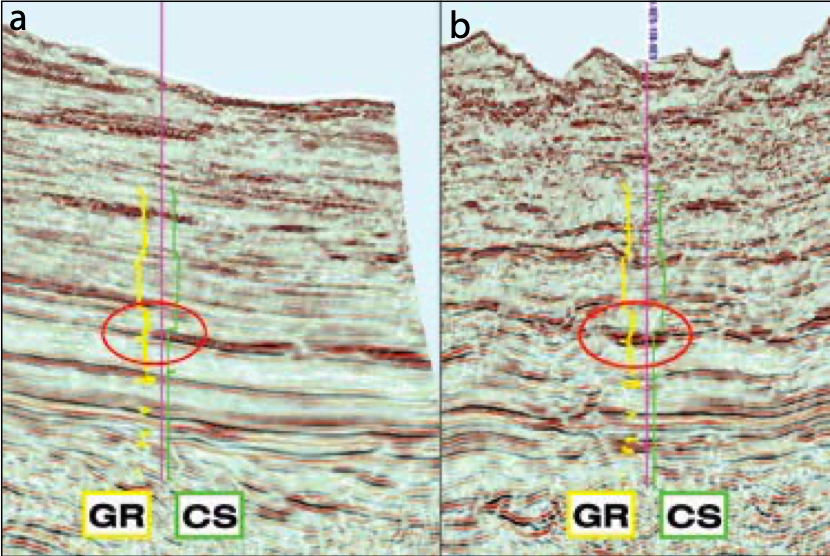
Proven and new play types
Integrating all available seismic tools, a schematic section has been put together to illustrate the various play types identified in the Sergipe Basin (see ‘Play types offshore Sergipe Basin’, above). Source rock, reservoir, seal and trap evaluation has been combined with amplitude and AVA anomaly analysis, resulting in up to 14 different potential targets in pre- to syn-rift and post-rift sequences which have been mapped and are potentially associated with hydrocarbon indicators. These play types include the proven stratigraphic seaward dipping Late Cretaceous Calumbi Formation slope apron and base of slope deepwater turbidites.
Many new untested play types include Early Cretaceous syn-rift 3-way dip closures with fault seal and 4-way dip closed structures with either fluvio-deltaic or aeolian sandstone reservoirs, Aptian source rock and intra formational shale seals. Also in the Early Cretaceous, syn-rift unconformity truncation plays similar to those associated with the successful Dentale play fairway in Gabon have been identified.
Aptian/Albian plays could be sourced by either Aptian or Albian source rock and include Aptian/Barremian transgressive sands, sandstones and limestones in stratigraphic unconformity lag or seaward dipping traps, as well as 3-way dip closures against sea mounts or intrusive induced anticlines and fault controlled 3-way dip closures.
Late Cretaceous and younger rocks have similar traps to those mentioned above, with the Calumbi formation as the reservoir and either Aptian or Albian source rocks. The combined structural-stratigraphic landward-dipping basin floor fans are a significant untested play type with excellent amplitude and AVA seismic indicators. Figure 6 shows a dip seismic line in time, displaying the (Far-Near*Far) angle stack attribute. Yellow indicates a soft kick which brightens in the far angle stack (AVA anomaly). A zoomed-in panel of the dashed box shows a strong AVA anomaly with an associated basin floor fan geometry. The conventional seismic PSDM zoomed-in display, with water depth corrected, shows the true geometry of this basin floor fan.
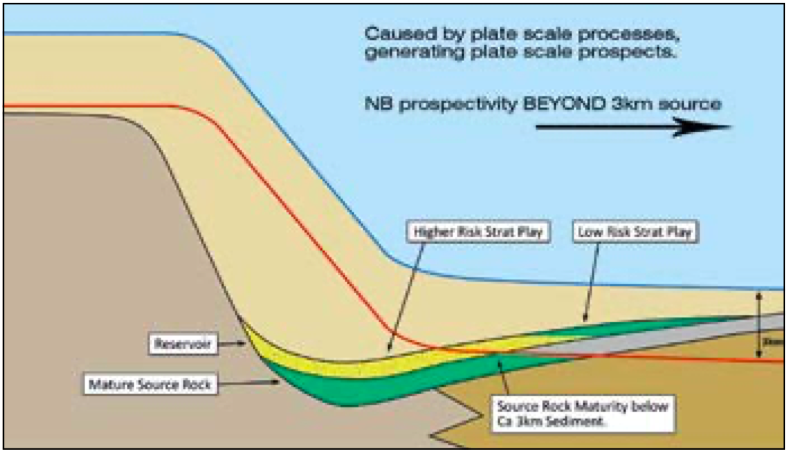
Gravity modelling
An accurate interpretation of the crystalline basement and the Moho discontinuity was made possible by the high quality PSDM imaging (see ‘seismic panel’ above). The interpreted horizons and interval velocity models were used to constrain modelled gravity profiles, from which were derived gridded maps of the base of sediment (top crystalline basement) and the Moho discontinuity.
These modelled gravity inversions have led to an improved interpretation of the crustal geometry by augmenting the seismic imaging, resulting in a clearer picture of crustal architecture including the amount of stretching associated with rifting across the basin (Figure 2). The beta factors that are implied by this stretching help to constrain the modelling of heat flow and thermal maturation.
Sergipe past, present and future
Evaluation of modern, high quality seismic data has led to the confirmation of the extension into open acreage of proven turbidite channel systems of Mid to Late Cretaceous and Early Tertiary age. Using an extensive long-offset seismic dataset spanning both sides of the Atlantic, a model has been put together showing basin floor fans dipping landward and pinching out towards the mid-oceanic ridge. In Sergipe these basin floor fans are associated with AVA anomalies similar to those of the discoveries. This play type is being tested by the Yakaar well offshore Senegal and is set to become the exploration target of the future due to its huge potential.

Integration of available seismic and potential field data has resulted in a greater understanding of the main elements of the petroleum system and, therefore, in the identification of multiple as yet untested play types in this basin. Again, with calibrated amplitude support and with pre- to syn-rift analogies in the successful targets in the conjugate Gabon margin, modern tools are available which confirm that the undrilled potential offshore Sergipe easily surpasses the discovered resources to date
Further reading from GEO ExPro
Sergipe Basin, Brazil: DHIs from Calibrated AVO Stacks by Mike Saunders and Dan Negri (Spectrum); Christopher Ross (Cross Quantitative Interpretation); Scott Bowman (Petrodynamics)
In the relatively mature Sergipe Basin, AVO anomalies can be used to highlight prospective anomalies and eliminate leads and prospects without such indicators. This article appeared in Vol. 11, No. 5




